Reviews
Rock ‘Em Dead
Mark Freed
USA, 1991
Credits
Review by David Carter
Posted on 04 October 2009
Source Academy Home Entertainment VHS
Categories 31 Days of Horror VI
As American “teen culture” rose in the wake of World War II, so did efforts from politicians and parents to suppress it. The fifties saw campaigns against horror comics and then-new rock music, both of which were demonized as being responsible for everything from juvenile delinquency to sexual promiscuity. The ’80s and early ’90s ushered in a return to these suppression efforts, this time aimed at the previous targets’ heirs: horror cinema and explicit rock-and-roll. Both art forms were lambasted by critics and the public alike but nevertheless managed to be two of the most commercially successful mediums of the era.
A few filmmakers tried their hands at combining the two art forms, with mixed results. Over the coming weeks we’ll be taking a look at a short-lived but highly entertaining subgenre: hard rock horror.
Shock ‘Em Dead begins with what could very well be the worst rendition of “Purple Haze” in the history of recorded music, set to a montage of the Hollywood strip. The band Spastique Kolon is holding auditions for a new guitarist and the latest applicant can’t seem to mimic or remember the Hendrix tune and is kindly dismissed by the effeminate lead singer Jonny Crack. As band manager Lindsay - a post-porn, post-Cry Baby Traci Lords - reminds them, they only have two days to fill the guitarist slot before they audition to be the opening act on the upcoming Creeping Flesh tour. The studio tech mentions that a tenant from his uncle’s trailer park is a guitar player and, having no other alternative, the band grants this complete unknown an audition.
Enter Martin, a perpetual loser and nerd who is bullied by everyone in his life. Martin lacks even rudimentary guitar skills, causing the previously polite Jonny to fly into a rage and kick him out of the studio. Dejected, he attempts without success to get re-hired at the job he quit to take the audition before completing his parade of misery by being evicted. Martin wanders the streets until the local eccentric known as “the voodoo woman” approaches him. She offers to make all of his desires come true provided he swears allegiance to an unknown power in an elaborate ceremony. Needing little convincing, Martin agrees to serve in exchange for rock stardom, is promptly stabbed in the heart by the voodoo woman, and has a vision of Satan.
When he awakens, Martin is in a large mansion and has a newly sprouted mane of jet-black hair. A trio of demonic beauties informs him that his heart’s desire has been met: he’s the greatest guitar player in the world. After renaming himself “Angel Martin,” he easily earns the guitarist position in Spastique Kolon and charms the beautiful Lindsay in the process. Martin then learns of the downside to his devil’s bargain—he’s no longer able to eat food and must kill and consume the souls of others to survive. He goes about this dark business with glee, picking off his former tormentors first. He then turns his bloodlust to Jonny, murdering him and taking over leadership of the band. Martin finds that his deal has limitations, however. He’s unable to be with Lindsay unless he can trick her into taking part in a ritual similar to his. His attempts to woo her fail and his more aggressive methods cause her boyfriend to seek out the way to destroy him before he’s able to kill again.
Shock ‘Em Dead takes the inspiration for its horror storyline from both classical literature and twentieth century folktales. The influence of the Faust legend is evident throughout the film, and the plot shares a certain kinship with Thomas Mann’s version of the tale in his Doctor Faustus. In Mann’s novel, a composer exchanges his soul for a period of musical success, represented here by Martin’s bargain to attain hair metal superstardom. As with any Faustian deal, Martin’s has a heavy price. However as frequently seen in early nineties horror, Martin relishes his murderous tasks, turning them into the type of revenge kills one typically finds in the slasher genre. Martin’s victims are depicted as loathsome or sinful prior to being murdered, causing the audience to desire their deaths and the vicarious catharsis they offer. As seen in any Friday the 13th or similar film, drug use or sexual promiscuity is almost immediately followed by death despite Shock ‘Em Dead’s glorification of the “rock-and-roll lifestyle.”
Martin’s transformation into Angel Martin also has roots in the legend surrounding blues great Robert Johnson’s alleged deal with the devil. Like Martin, the folktale claims that Johnson was hopeless as a guitarist before exchanging his soul to the Devil for musical prowess. Martin’s dilemma in Shock ‘Em Dead is not unlike that of a blues song; he’s unable to have the only woman he wants, Lindsay. He rejects the three women provided to him by Satan, all of who have made deals similar to his own, and instead prefers the purity represented by Lindsay. In one of the many ironic moments in the film that show the façade often implicit in rock music, it is strongly implied that Traci Lords’ Lindsay is still a virgin. Curiously, the film’s praise of Lindsay’s moral purity is the only point at which morality is an issue in the film. Shock ‘Em Dead completely avoids a good-vs-evil debate and never even specifically names Martin’s benefactor as evil or as Satan. The nebulous cosmology of the film and the lack of religious references stymies any attempt to generate tension from Martin’s predicament and prevents Shock ‘Em Dead from exploring the relationship between rock and religion.
One must wait until the end of the final credits to see the true source of Martin’s abilities: Michael Angelo Batio. The credit reads, “Guitar Wizardry by Michael Angelo of Nitro.” Wizardry is an apt description of Batio’s abilities and the ambidextrous guitarist’s flashy style and V-neck guitar will be immediately recognizable to guitar aficionados. Batio’s style is known as shredding, and his band, Nitro, never had a major hit but is best known for singer Jim Gillette’s impressive combo of foot-high, bleached-blonde hair and four octave vocal range. Batio, Nitro, and Shock ‘Em Dead form an almost perfect example of early nineties’ rock and the main criticism aimed at it: the preference for appearance over substance or authenticity. Nowhere is this more evident than through the character of Jonny Crack, portrayed as an overt homosexual stereotype within the film but responsible for the misogynistic songs “I’m in Love with a Slut” and “Hairy Cherry.”
Shock ‘Em Dead doesn’t elicit any scares nor does it fail spectacularly enough to be notable for its lack of competence. Apart from a few clever moments of comedy, the film’s lone admirable quality is an inadvertent yet accurate critique of the states of rock music and horror cinema at the time of its release. The climax sees Martin battling with Lindsay’s boyfriend on the stage of an amphitheatre. Unknown to them, the band Creeping Flesh is watching them from the seats but not intervening because they think the fight is merely the band’s stage show. When Martin is stabbed and subsequently explodes, Creeping Flesh exits, stating as they go that they “had seen better.” Rock and horror of the early nineties were both overly theatrical and often annoyingly self-aware. We’ve seen better than Shock ‘Em Dead as well and, on some level, the film acknowledges that fact; Shock ‘Em Dead is an unremarkable film, but it is a compelling record of the repetition and superficiality of rock and horror of the period—two qualities that would cause both mediums to drastically wane in popularity in the years that followed.
More 31 Days of Horror VI
-

From Beyond
1986 -
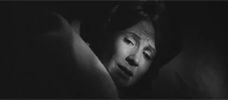
The Haunting
1963 -
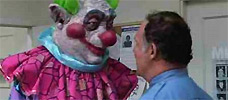
Killer Klowns from Outer Space
1988 -

Shock ‘Em Dead
1991 -

Critters
1986 -
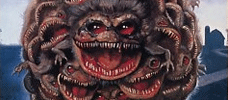
Critters 2
1988 -

The Fall of the House of Usher
1928 -

Jonestown: The Life and Death of Peoples Temple
2006 -

In the Mouth of Madness
1994 -

Winterbeast
1991 -

Black Roses
1988 -

Needful Things
1993 -
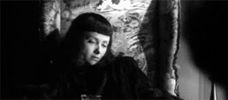
The Seventh Victim
1943 -
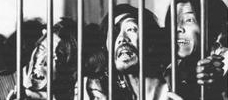
A Page of Madness
1926 -
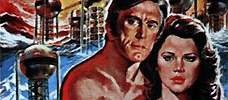
Holocaust 2000
1977 -
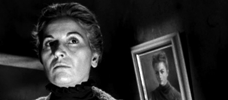
The Man and the Monster
1958 -

The Texas Chainsaw Massacre 2
1986 -
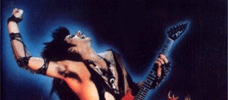
Trick or Treat
1986 -

Single White Female
1992 -
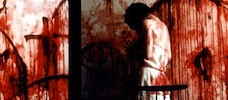
Trouble Every Day
2001 -
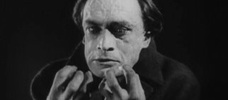
The Hands of Orlac
1924 -

The Devil’s Advocate
1997 -
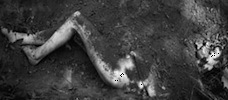
Nocturne
1998 -

Hardware
1990 -

Hard Rock Zombies
1985 -

The Slumber Party Massacre
1982 -

Saw VI
2009 -
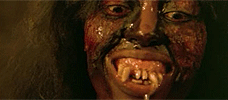
Zombi 4: After Death
1988 -

The Uninvited
1944 -

Hausu
1977
We don’t do comments anymore, but you may contact us here or find us on Twitter or Facebook.



